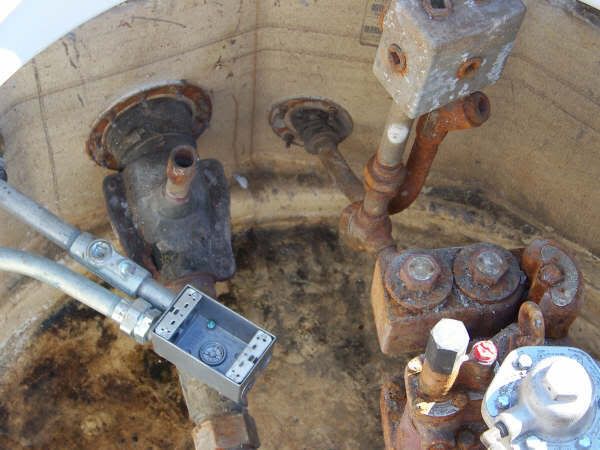The American Petrolium Institute publishes a safety procedure for fueling stations.
Safe Work Practices for
Contractors Working at Retail
Petroleum/Convenience Facilities
API RECOMMENDED PRACTICE 1646
I recently had to certify on this, and can share some issues with your fuel sump.
Apparantly, a tank top sump or pit is always a confined space, and requires pre-entry qualification, atmospheric tests, LOTO, Baracading, etc.. Further, with pressure regulators and relief valves clearly visible in the photo, it may be a permit required confined space meeting the potential (likelihood) to contain a hazardous atmosphere. A reference is provided: CFR 1910.146
It also appears the corrosion prevention system is not functioning, so the bottom of the tank may be worse. The most common prevention systems are described by API as Non-conductive Coatings, Cathodic Protection, or Dielectric Fittings. Electrical conduit or metal components touching the outside of metal fuel tanks can defeat a cathodic protection system.
If a permit is required locally or by OSHA 1910.146, I suspect ignoring it could be negligent. Completing this job without fixing the corrosion prevention system could also be negligent. If anything goes wrong after a contractor touches this fuel tank, and there was no confined space entry permit / pre-entry checklist record, I suspect such negligence would be liable for permitted rework, tank replacement, 3rd-party injury, or business costs.
This API publication provides sample permit forms, but also claims it doesn't include local or State-specific codes, which must be checked seperately. Information about API Publications, Programs and Services is available on the web at
www.api.org


